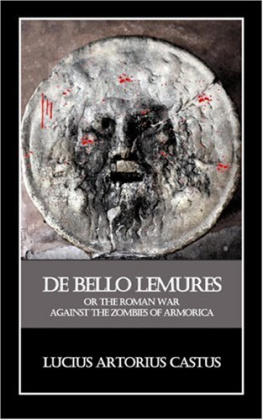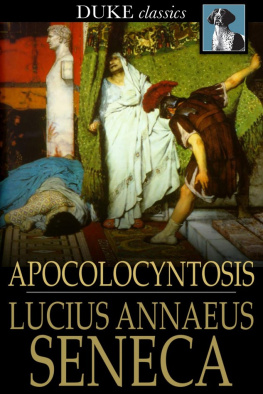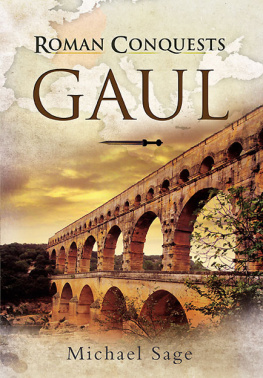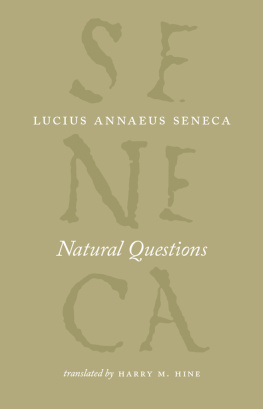All rights reserved.
Except in the United States of America, this book is sold subject to the condition that it shall not, by way of trade or otherwise, be lent, re-sold, hired out, or otherwise recirculated without the publishers prior consent in any form of binding or cover other than that in which it is published and without a similar condition being imposed on the subsequent purchaser.
FOREWORD
At the close of the last century, the revolutionary advances in the imaging of ancient manuscripts achieved by the team assembled by Baltimores Walters Art Museum to recover the Archimedes Codex C ushered in a new era in paleography. Documents that had been believed to be irretrievably illegible due to the ravages of time, dirt, weather, vandalism, and even volcanic eruption were now decipherable using the teams cutting-edge multispectral imaging and synchrotronic x-ray techniques. New technology made it possible to imagine that lost works by ancient playwrights, essayists , scientists and mathematicians might be rediscovered hiding in virtually any repository of ancient or medieval documents, and researchers swarmed through libraries and museum collections to seek them out.
Although the techniques in question were of great value in uncovering text obscured by water damage or carbonization, their greatest utility was in assisting the reading and deciphering of palimpsests. Even the most faint and obscure writing could be thrown into vivid relief by multispectral imaging of the materials used in different ink types. In the case of the Archimedes Codex C , although the original ink had been scraped off the pages with a pumice stone and the writing surface cleaned with acid by the 13th century monk who re-used the parchment to make a prayer book, researchers armed with the new technology were able to see past the monks handwriting to the Archimedes text below it. As the technique was refined, even multiple palimpsests where the erasing and overwriting process had happened more than once yielded up their secrets.
It was perhaps inevitable that this process would lead to the discovery of so-called secret palimpsests [or Yetis, as they are sometimes jokingly named in the paleography community]: documents which had not previously even been identifiable as palimpsests because the original handwriting had been so thoroughly erased that it was no longer visible to the naked eye, or even under an ultraviolet lamp. After Oxford researchers discovered the first Yeti, literally every ancient or medieval document had to be considered a potential palimpsest, and the amount of material that could be usefully subjected to analysis as part of the search for lost works expanded by several orders of magnitude.
It was during a comprehensive multi-spectral search of the document trove held at the Universittsbibliothek Salzburg that the curious and much-debated work that follows was discovered. A contemporary copy of Freidanks Bescheidenheit that had not previously been identified as a palimpsest was revealed to be a Yeti by synchrotronic x-ray analysis. The Freidank copy had been assembled out of a pastiche of parchments from different documents. A portion of the underlying text was quickly determined to be a fragment of Vitruvius On Architecture ; the balance, it eventually became clear, was something else indeed.
Lucius Artorius Castus was a minor figure in 2nd century history, known primarily from inscriptions, including his funerary inscription. Despite his personal obscurity [some might say insignificance], Castus is relatively well-known in the modern era, due mainly to the fact that his nomen and some details of his life history and legionary cavalry service in Roman Britannia have caused him to be advanced as a candidate to have been the historical basis for the Arthur legend. When it was recognized that the new work purported to be a copy of a history written by Castus in the form of a long letter or address, delighted scholars hoped that it might shed light on this curiously interesting figure, as well as upon the broader history of the declining years of the Antonine dynasty. As the complete or nearly complete work was uncovered, that initial hope and delight turned into shock, and furious controversy.
The controversy, of course, arose from the fact that the letter purported to be an account of a supernatural event - or an epidemiological event so badly misunderstood as to appear supernatural - involving Roman legionaries and auxiliaries on the Brittany peninsula in the late 2nd century.
Immediately, accusations were leveled that the work was a forgery or hoax, but it was rapidly determined that this was virtually impossible. The chain of provenance of the Salzburg Freidank was beyond question, and that undisputed 13th century work was written over the Castus text. If De Bello Lemures , as the work became known, is a hoax, it has to be a 13th century hoax and the questions that would be raised if that were so would be almost as profound as those raised if the work is a genuine recounting of the experiences or perceived experiences of a 2nd century Roman nobleman. In the production of this translation I have worked with the assumption that the work is genuine.
Others have argued that, given the subject matter, it is plain that the work was intended to be a work of fiction or proto-novel after the manner of the Satyricon . This is, of course, a position that has in its favor the fact that it does not require us to explain the bizarre events the author describes. But this view is undermined by the fact that the type of narrative contained in De Bello Lemures was only attained elsewhere by Roman authors in the production of histories; as a proto-novel it would represent an advance in literary form, achieved just once for this work and never achieved again by any Roman author. In addition, the work would not merely be a literary advance as a proto-novel; it would represent a proto-novel written as a faux history, essentially leaping over the entire early history of the form and landing squarely in the middle of post-modernism. The proto-novel theory is also undermined by the fact that we have absolutely no evidence that Castus was a literary figure in addition to being a military one no literary activity is mentioned in the inscription on his funerary monument, and no fragment of his writing or reference to his writing appears in the work of any other Roman author. To support the proto-novel thesis we would have to conclude that Castus was a unique literary figure who produced a unique literary work; and that despite this work being completely un-noticed by his contemporaries it was preserved by copyists for a thousand years before it was finally forgotten. Next to this string of unlike- lihoods, the idea that De Bello Lemures is exactly what it claims to be is not that incredible.
Archaeological research at sites referenced by Castus is ongoing. It is greatly aided by the precise description of locations and distances the author provides in his narrative. We may be just one turn of the spade and one more discovery away from settling the question of which camp in the debate over this work is correct. Until the question is settled, we have to be satisfied with the work itself.
A Note on Punctuation:
All punctuation used here is interpolated from the text. Classical Latin did not employ punctuation. In some cases, to aid the readability of the text and for aesthetic purposes conversations Castus recounts in the third person have been rearranged into the dialogue form, including conversation marks, that is customary and familiar to modern readers.









